“Often, it is challenging to mold the liquid silicone due to its viscosity. But, compression molding can mold this rubber with correct tooling and molding parameters.”
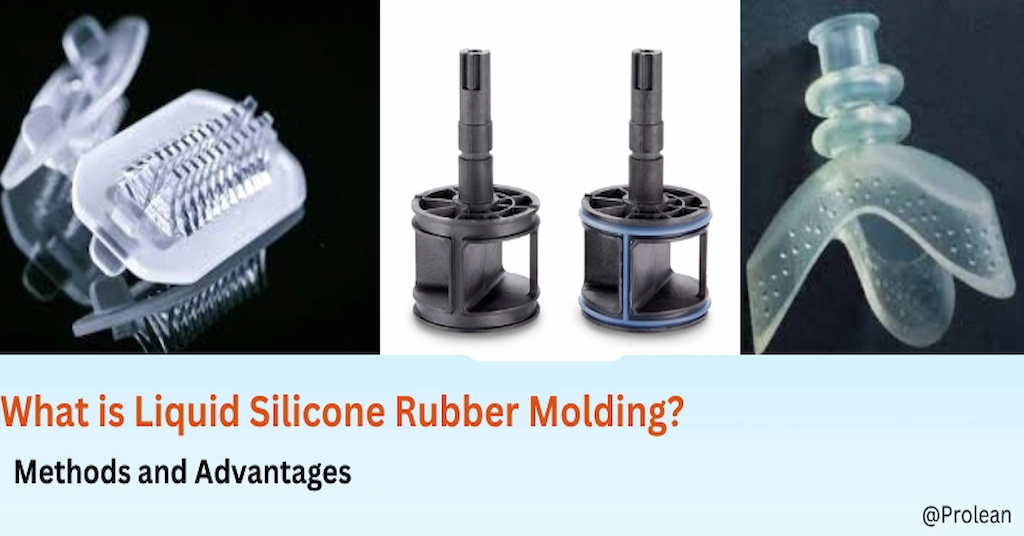
Different useful properties of Liquid Silicone Rubber (LSR), including strength, biocompatibility, and thermal stability have made it applicable across industries. For example, catheters & respiratory for healthcare, Automotive seals & gaskets, consumer products, and kitchenware. But, how raw silicone rubber is converted into desired products? Here, the Liquid Silicone Rubber is one of the prominent approaches to crafting such parts or products.
The diversity and choices of molding methods, like silicone injection molding and compression molding ensure the design specification and application requirements of different industries. This article will break down the various silicone molding intricacies including injection molding of liquid silicone rubber, other methods, advantages, etc.
What is Liquid Silicone Rubber (LSR)? Its Properties
It is a silicone elastomer with relatively high fluidity at room temperature. The two main constituents of LSR are the base cross-linker polymer and catalyst. Consequently, this separation is also applied during the molding to prevent the silicone from curing prematurely.
- Base Polymer: Polydimethylsiloxane (PDMS)
- Fillers: Silica, calcium carbonate, etc.
- Catalysts: Platinum-based catalysts
- Additives: Heat and UV stabilizers, pigments, flame retardants, etc.
The given composition of LSR brings several properties. The raw LSR or molded parts exhibit good tensile strength, elongation, electrical insulations, chemical inertness, and biocompatibility.
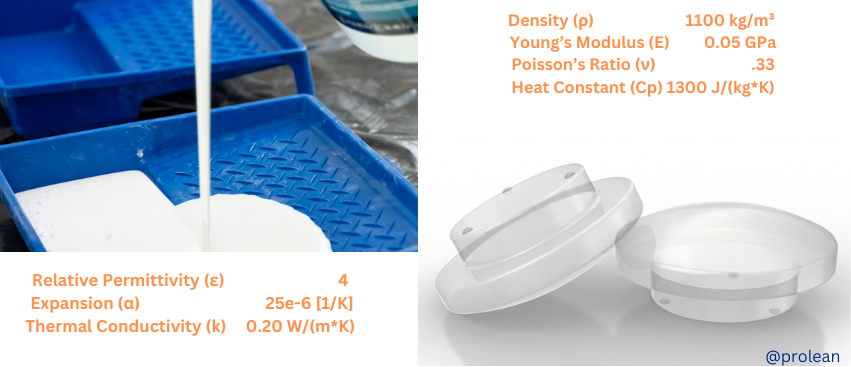
Properties of LSR
Moreover, you can customize the properties of this rubber by adjusting the fillers and additives. It is also suitable for specific uses. So, all these properties distinguish it from standard solid silicone rubbers primarily due to its lower viscosity.
Try Prolean Now!
Methods of Liquid Silicone Rubber Molding
The molding of LSR material involves injecting the material at a specific pressure into a pre-made mold. Then, the material flows inside the cavities and gains its shape. Different molding techniques follow this foundational mechanism, although each involves separate equipment and procedures.
- Injection Molding
- Compression Molding
- Rotational Molding
- Over Molding
The above methods are superior to each other for some specific applications. So, the LSR molding can cater to the countless molding needs. For example, Overmolding is better than any other method if the task involves inserting encapsulation.
Moving on, we will discuss each molding method for LSR material in brief to highlight their capabilities and advantages.
Related: Comprehensive Guide to Silicone Rubber Moldings
Liquid Silicone Rubber (LSR) Injection Molding
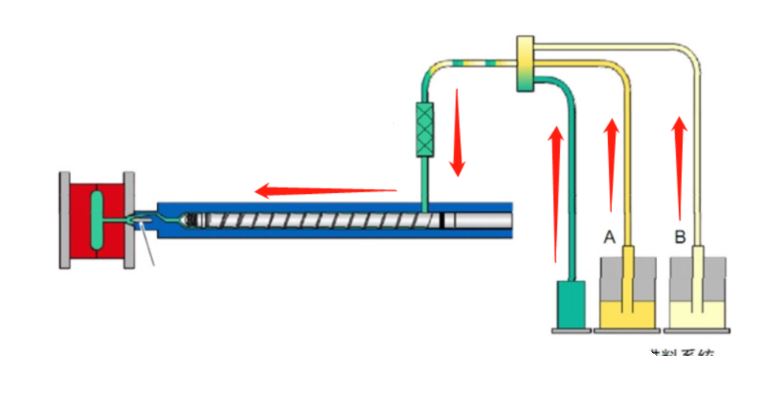 LSR Injection Molding
LSR Injection Molding
Like every other injection molding, the LSR Injection Molding process involves forcing the liquid silicone rubber into the injection mold. However, the setup and tooling are not as simple as they seem.
The setup contains two separate units for cross-linked polymer and catalyst ( two elements of LSR). Meanwhile, pigments and additives are also in two different units. Before injection, a mixture mixes these four different material uniformly. Then, the nozzle injects the mixture into the mold.
Table: LSR Injection Molding Process
| Steps | Description |
| Mold Creation | Design and machining of the Silicone Injection mold |
| Preparation of LSR Material | Base polymer, additives, and catalyst preparation. |
| Injection Molding | Injection of LSR (mixture) into the heated mold at a controlled pressure. |
| Curing Process | Heat in the mold cures LSR into a solid, elastic state. |
| Demolding | Ejection pins facilitate the safe ejection of cured parts. |
| Post-Curing | Bake parts to complete cross-linking |
| Quality Control | Inspection and test parts to ensure they meet specifications. |
| Finishing Touches | Secondary surface finishing operations |
Typically, the Liquid Silicone Rubber Injection Molding temperature ranges between 180 to 200℃. Meanwhile, the injection pressure lies at 200 to 1200 psi.
Key Points:
- This method produces parts with complex geometries and tight tolerances ± 0.08mm.
- The fast curing time of LSR injection molding improves production efficiency.
- It can be fully automated, reducing labor costs and human error.
- It Suits both small and large-scale production runs due to its ease of operation and fast cycle times.
LSR Compression Molding
Compression molding is the simplest method of Liquid Silicone Rubber molding. It involves molding the liquid silicone into a preheated open mold instead of injecting it. The typical pre-heating temperature is 170-200 °C, depending on the size and thickness of the intended part.
After placing the material, a pressing mechanism compresses the material. This compression ensures the flow of material. Then, it captures the details of mold cavities.
![]()
Cooling of the silicone part
Here, the mold pre-heating, placing it in an open mold, and compression step all contribute to the longer production cycles. Thus, it fits for small to medium-volume production.
Advantages of LSR Compression Molding
- The LSR compression molding reduces material waste.
- It can fill complex molds with fine details, such as sealing membranes with thin walls.
- The flexibility in die design provides the best result with Custom Silicone Parts.
- This molding is most suited for metal inserts on the silicon rubber parts.
- The curing time of silicone rubber compression molding is less than the LSR injection molding.
- It can be automated like injection molding to increase production efficiency and precision.
Rotational Molding of Liquid Silicone Rubber
This molding method is specialized for making hollow-shaped parts from the LSR or other materials. The process works by heating the silicone rubber in a hollow mold. Then, rotate the mold( bi-axially) in an oven until it coats the inside of the mold and forms a shape.
However, this LSR Rotational molding is less popular than other ones because it involves a different type of curing procedure.
While less common for liquid silicone rubber (LSR) due to its distinct curing process, adaptations of rotational molding techniques can sometimes be applied to LSR for specific applications.
In the curing of LSR, the mold is heated at a specific temperature for crosslinking, and rotating will be slower for uniform silicone coating on the mold wall.
Key Points:
- Rotational molding creates complex geometries of Custom Silicone Parts that might be difficult or impossible to achieve with other moldings.
- It typically requires a curing agent (platinum catalyst) and accurate temperature for the cross-linking mechanism.
- You can achieve uniform wall thickness due to the rotational motion of the mold.
- Sometimes, it is more costlier than the injection and compression molding.
Try Prolean Now!
Overmolding with Liquid Silicone Rubber (LSR)
The LSR overmolding combines its high performance with the structural properties of the insert to achieve the desired functionality. For example, a polycarbonate tube is inserted into LSR to produce the medical catheter.
- The insert is kept on the mold before filling it with the LSR material.
- Proper orientation and location of injection gates considering the insert position can only maintain the structural integrity of the produced part.
- Adjusting curing temperature based on insert properties is critical for a strong bond between them after solidifying.
- The intended insert material should be compatible with the liquid silicone rubber.
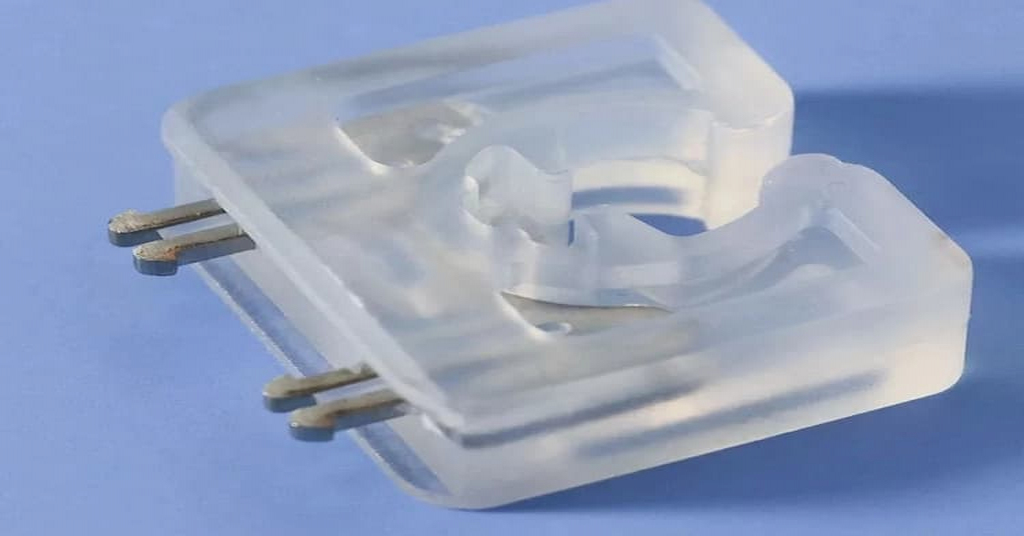
Metal Insert in Liquid Silicone Rubber Part
What are the Applications of Liquid Silicone Rubber Molding?
The diverse properties of silicone rubber make LSR a widely used material across industries. Different molding techniques convert the LSR with distinct procedures to the desired shape or geometry.
The application ranges from Silicone Prototyping to large volume runs.
![]()
Applications of Liquid Silicone Rubber Molding
The following table highlights the Liquid Silicone Rubber Molding Applications with examples.
Table: LSR Molding Applications
| Industry | Application Examples |
| Medical Industry | Surgical Tool Grips, Catheters, Medical Gaskets, Endoscopic Caps, Insulin Pump Components, Respiratory Masks, etc. |
| Automotive Industry | Engine Seals, Gaskets, O-Ring Seals, Suspension Bushings, Transmission Parts, Spark Plug Boots, and Air Intake Systems. |
| Consumer Electronics | Tablet Cases, Keyboard Covers, Drone Gaskets, Smartwatch Bands, Sealing for various devices, and more. |
| Sports and Leisure | Diving Masks, Protective Gear Inserts, Fitness Equipment Handles, Sport Shoe Inserts, Knee Pads, Elbow Guards, etc. |
| Aerospace | Fuel Hoses, O-rings, Insulation Seals, Grommets, Hydraulic Seals, Valve Liners, Window Seals, etc. |
| Dental Products | Mouthguards, Dental Picks, Orthodontic Aligners, Denture Adhesives, and Implants. |
Liquid Silicone Rubber Molding Services at Prolean
The shaping of liquid silicone rubber with molding is different from molding of thermoplastic or composites. The low viscosity of LSR demands several careful considerations and process controls for the desired result. At ProleanTech, we understand this aspect and accommodate the Changes in Our Injection Molding Services.
We have advanced and automated molding equipment and tooling arrangements to meet your requirements. Our team of engineers with a decade of experience executes the Injection Molding Services, from design optimization to quality control.
Moreover, partnering with ProleanTech would end your hassle of looking for a separate LSR Silicone Mold Manufacturer. We have our own CNC and EDM machining facilities to create precise & intricate molds. It will also speed up your project timeline.
So, if you are looking to mold your LSR parts or products, send us your design and other specifications!
Read More:
What is Custom Silicone Extrusion? Process and Applications
Try Prolean Now!
Summing Up
Molding is the best approach to utilize the various useful physical, mechanical, and chemical properties by converting them into functional parts or components. Different Silicone Rubber Injection Molding types can be applied based on design complexity and desired outcomes of the molding project.
The LSR injection molding is preferred for producing precision and intricate detail parts in large numbers. Meanwhile, compression molding is more suitable for manufacturing simpler geometries at low cost.
FAQs
What is LSR Molding?
It is one of the LSR manufacturing processes that shapes it into durable, flexible, and intricate parts.
Are Liquid Silicone Rubber Molding parts durable?
Yes, they are highly durable because of their excellent resistance to temperature extremes, UV light, and chemicals.
Which one is better? LSR injection molding or compression molding?
The choice depends on the project requirements: injection molding is ideal for complex, high-volume production. On the other hand, compression molding suits simpler designs and lower volumes.
What is liquid silicone molding used for?
Liquid silicone molding produces components for medical devices, electronics, automotive, kitchenware, aerospace, and other industries,
What is the difference between liquid silicone and silicone rubber molding?
The main difference is their state: LSR molding uses silicone in a liquid, whereas silicone rubber molding typically involves solid silicone rubber.

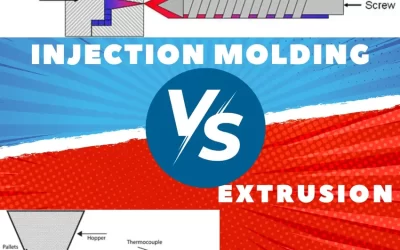
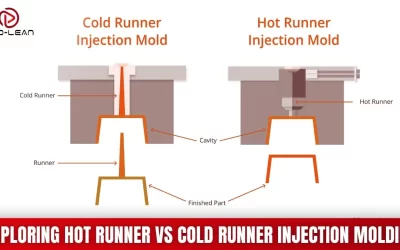
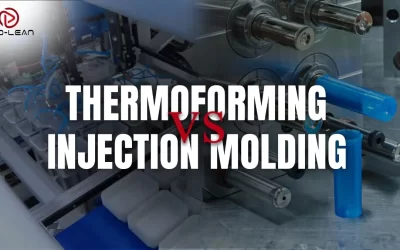
0 Comments